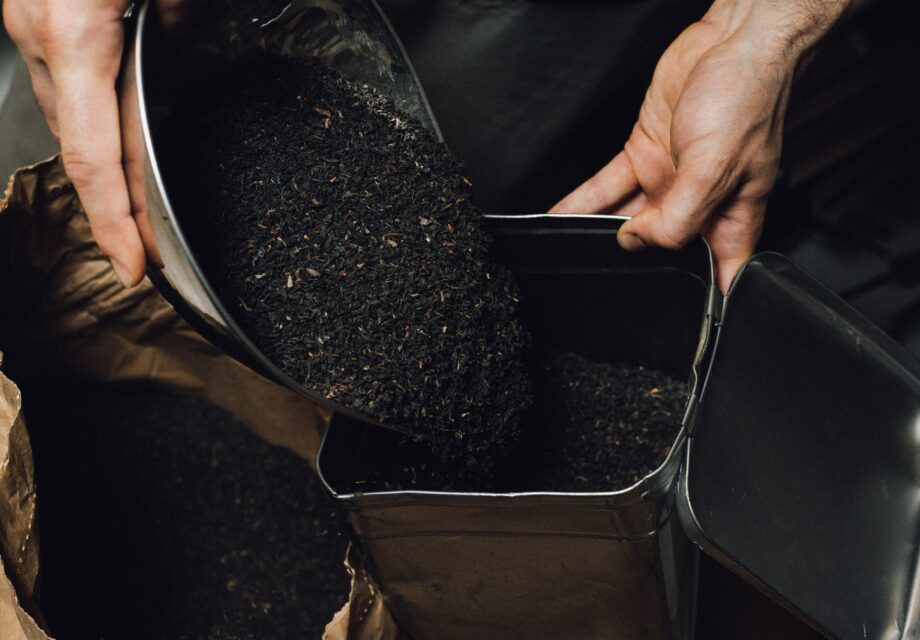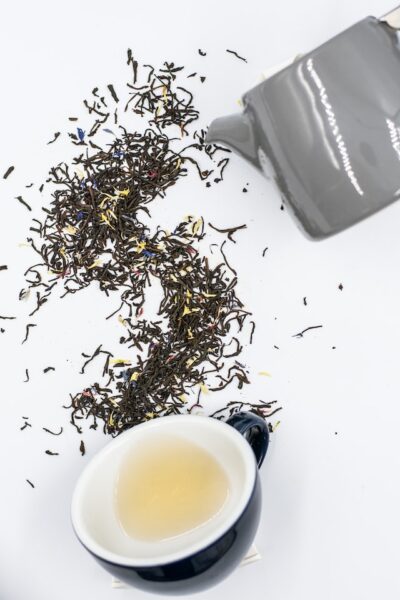
Tasseography. Ever heard of it? While you might not recognise it from that scientific-sounding name, we bet that you do know what it is: the reading of tea leaves!
It’s a method of divination or fortune-telling that has been used for hundreds (maybe even thousands) of years, whereby tassologists try to interpret meanings from the shapes made by loose tea leaves at the bottom of a cup of tea.
As the big fans that we are of all things loose leaf tea, we thought it would be interesting to give you an insight into tasseography and hopefully teach you a thing or two that you didn’t know before today!
So put the kettle on, get cosy, and come along with us on a journey looking into the past – you might even see a little bit into the future, too!
Where does tea reading come from?
There’s actually a lot of debate around the origins of the reading of tea leaves and where it came from geographically.
Some believe that it began thousands of years ago in ancient China, where they were drinking tea millenniums before anybody else. Other people believe that it was instead a relatively recent invention from Europe, designed to create the impression that it is an ancient act in an attempt to feign legitimacy.
The most popular, and most likely to be true, theory is that tasseography originated in the culture of the Romani people. They would drink tea (which was all loose leaf back then, no teabags until 1908!) and then try to identify shapes left behind by the wet tea leaf sediment and divine their meanings.
Romani people emigrated from their home of Rajasthan, Northern India, and lived an itinerant life where their culture spread across Europe, Asia, and the rest of the world. Tasseography came with them and became emblematic of their culture, and they would open tea parlours or even travel door-to-door offering tea reading services for Europeans.

What makes tea so special?
Well, tea wasn’t the only drink that people would use to predict the future! There’s some evidence that other cultures used sediments created by coffee and wine for divination, too.
But a lot of people find that loose leaf tea is the best tool for divination because the leaves are substantial enough to leave discernible shapes at the bottom of a cup.
Funnily enough, that’s also the reason why loose-leaf tea specifically has prevailed as the best tool for tasseography as opposed to tea from a tea bag. If you cut open a tea bag and try to recreate the effects, you’ll find that the tea is too fine and will likely struggle to read any sediment created.
How to read tea leaves
Reading tea leaves is actually a relatively easy practice and doesn’t require any specialist advice to get started, so feel free to give it a go yourself! The difficult part is knowing how to understand what different shapes or objects mean – we’ll get to this later.
If you want to start reading tea leaves by yourself then this is how you start.
Make your cup of tea
Brew a cup of loose-leaf tea. It’s important that you skip the tea strainer and place your leaves straight into your cup of choice. This might be contrary to the best way to enjoy a cup of tea, but if you use a strainer then you’ll have no tea leaves left behind to read!
The best tea to use is black loose leaf tea. This tea has easily discernible leaves and is best for inexperienced tea readers to understand. We recommend our Ceylon tea, Earl Grey tea, or perhaps a classic English Breakfast tea.
Take your time and enjoy your drink. It is believed that the act of drinking the tea is what personalises the results to the drinker. After all, it is your actions through moving the teacup that will decide where the leaves settle. So have a think about what you’d like to find out about your future, you might just sway the tea leaves to help you out!
Divine the leaves
Once you have almost finished your drink, leave a little bit of liquid in your cup and gently swirl it in a clockwise direction. This will ensure that your tea leaves are well spread out and settled before reading.
Next, take the handle of the cup in your left hand and peer into the cup! But before you begin trying to identify any symbols in the leaves, there are two things that you should remember.
First, the bottom of the cup signifies further into the future whereas the sides of the cup signify closer to the present.
Second, symbols aren’t meant to be interpreted on their own. Instead, a symbol that is close to another means that the two are connected in some way.
Tea leaf reading symbols and meanings
If this is your first time trying to read tea leaves then you may be a bit overwhelmed. It all just looks like loose tea!
Try and keep an open mind and treat it like you are lying on your back in an open field and spotting shapes in the clouds overhead. You can use your own imagination to interpret the shapes in the sediment of the leaves – you’re the boss!
It might help if you know what shapes to look out for and what they might mean, so here are some examples:
- Anchor – luck or success. This could be work or business-related or related to relationships.
- Angel wings – good news is coming.
- Bird – travelling and good fortune while travelling. The direction the bird is facing may also be important.
- Letters – letters of the alphabet usually signify a person. Try and determine who a letter may be referring to, ‘A’ for Alex, for example.
- Moon – different moons mean different things. A full moon represents romance, crescent moons represent prosperity. If a moon is cloudy, then this may indicate the contrary.
We recommend you find a tasseography dictionary of your own choice and use this to find consistent meanings for any symbols that you might find.
You’ll notice that a lot of symbols have multiple meanings. The idea is to try to piece together meanings by looking at what symbols are next to each other and what they might mean for your life specifically depending on what’s going on in your life at that moment.

Leaf Tea Shop loose leaf aficionados
Trying to read tea leaves can be a fun activity after sharing a cup of tea with a friend or an evening relaxing by yourself.
Find a loose leaf tea that you love from our online store and give it a go!




